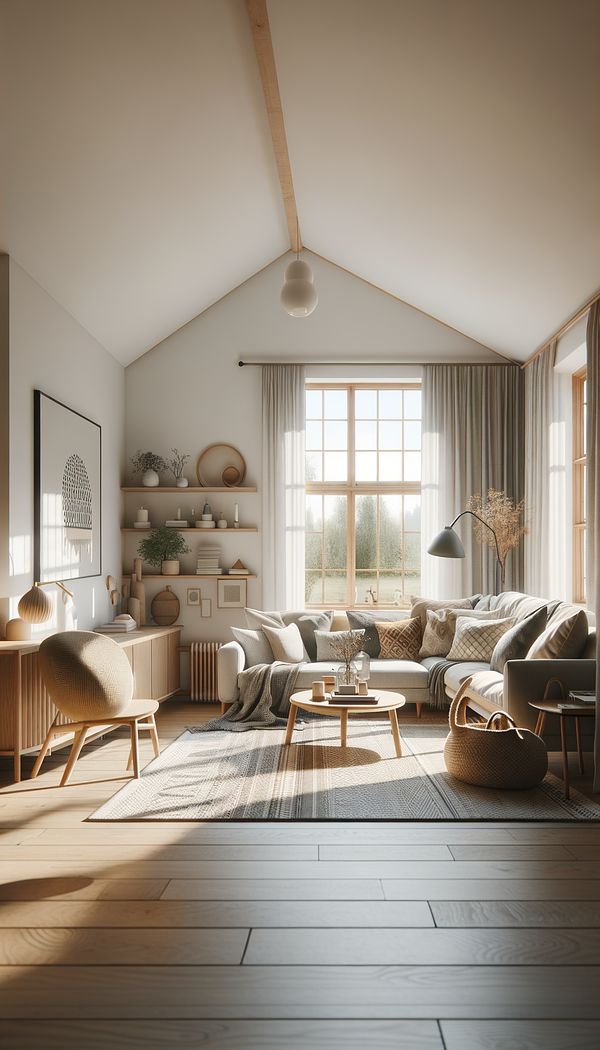What is Scandinavian?
Scandinavian design is a minimalist style of design that emphasizes simplicity, functionality, and natural materials.
Description
Scandinavian design, heralding from the Nordic countries of Denmark, Norway, Sweden, Finland, and Iceland, is characterized by its simplicity, minimalism, and functionality. This design philosophy became prominent in the 1950s and is predicated on the idea that beautiful and functional everyday objects should be affordable to all, not just the wealthy. Scandinavian interior design focuses on clean lines, natural materials such as wood and leather, and a light, neutral color palette to create airy, bright spaces that feel both modern and cozy.
The use of light is a crucial element in Scandinavian design, reflecting the Nordic regions' long winters and short days. Large windows, unadorned or with minimal treatments, are common to maximize natural light. When it comes to materials, there is a strong emphasis on sustainability and eco-friendliness, with a preference for organic fabrics, recyclable materials, and craftsmanship.
Another hallmark of this style is the lack of clutter. Storage solutions are smartly integrated into the design to keep spaces tidy and functional. Decor tends to be minimal, with art and decorative items often having both an aesthetic and a practical purpose. This approach not only contributes to the clean aesthetic of Scandinavian interiors but also reflects the design philosophy's emphasis on simplicity and utility.
Usage
Scandinavian design is prevalent in homes and public spaces that value a combination of aesthetics and practicality. It is evident in everything from furniture and lighting to textiles and accessories. Well-known brands such as IKEA have popularized this design approach globally, making it accessible to a wide audience. In residential spaces, Scandinavian designs are often applied to create serene, functional living areas that feel spacious and light, irrespective of the actual size of the room.
FAQs
-
How does Scandinavian design differ from modern design?
Scandinavian design and modern design share similarities like clean lines and minimalism, but Scandinavian design places a stronger emphasis on natural materials, light colors, and maximizing natural light. It also features more warmth and coziness, commonly referred to as 'hygge' in Danish culture.
-
Are natural materials a requirement for Scandinavian design?
Natural materials are a hallmark of Scandinavian design, contributing to its warmth and organic feel. While not a strict requirement, their use is strongly encouraged to achieve the authentic Scandinavian aesthetic.
-
Can Scandinavian design be colorful?
Yes, while Scandinavian design is known for its neutral color palette, pops of color are often introduced through art, textiles, and accessories. This adds personality and vibrancy to spaces without overwhelming the minimalist aesthetic.
Practical Application
When incorporating Scandinavian design into a space, focus on simplicity, functionality, and the use of natural materials. Opt for furniture with clean lines and light colors to enhance the sense of space. Maximize natural light with large windows and minimal window treatments. Embrace minimalism in decor, choosing items that are both beautiful and practical. Consider sustainability by selecting eco-friendly materials and products.
-
Design Styles478 articles
-
Materials & Textiles360 articles
-
Lighting111 articles
-
Sustainability & Eco-Friendly Design69 articles
-
Decorating Principles & Elements330 articles
-
CeramicCeramic refers to objects made from clay that have been shaped and then hardened by heat.
-
Accessible DesignAccessible design is an approach to creating spaces that are usable by people with a wide range of abilities.
-
Contrasting WeltContrasting welt is a decorative edge detail used in upholstery and soft furnishings.
-
Design QuestionnaireA design questionnaire is a tool used to gather information from clients on their preferences, requirements, and goals for an interior design project.
-
CaroleanCarolean refers to the style of furniture and interior design from the reign of Charles II in England.
